By Tamara Buie, Monika Luczak, Sandrene (Sandy) Ryan, and Andrea Teltser
In the past, a company may have been able to tout a strong focus on improving culture by pointing to a basket of free snacks in the breakroom or giving out merch emblazoned with the company logo.
But after the COVID-19 pandemic rocked the world, companies must try harder than ever to demonstrate the importance of culture within their organization. As most world-wide catastrophes do, COVID forced employees to think about their mortality and how they want to spend their days. Gone are the days when employees just put their heads down and served as cogs in their corporate machines. The power is really with the job seekers. And that’s why culture is more important than ever.
Instead, today’s jobseekers want a job with an organizational culture where they can thrive, not just survive.
More Than Just a 9-to-5
In July of 2022, the U.S. Bureau of Labor Statistics reported that job quitting in the U.S. reached highs not seen in decades. Jobseekers aren’t interested in positions that simply offer a paycheck. There’s a generation of people who are really looking for work-life balance over having a prestigious job title. At Level Legal, we value our employees’ well-being and believe that a healthy work-life balance leads to better productivity, job satisfaction, and overall happiness.
Many people are looking for work that relates to their values and purpose – what some might call their “calling.” Don’t let the name fool you. A calling is simply work that a person finds joy in or sees as part of their identity. Research shows that viewing your work as a calling correlates to an increase in overall job satisfaction.
Organizations can ensure a good fit from the start by bringing culture to the forefront of their hiring processes. We have found that we can better identify and select candidates with the appropriate prior review experience and substantive skills for a particular project in a given practice area through pre-screening. This, in turn, can significantly contribute to the success of each project.
In: Flexibility
In 2020, Microsoft predicted that the traditional 9-to-5 work schedule would disappear. And it may have been right. McKinsey reports that 87% of employees offered a flexible work arrangement take it. In fact, a study conducted in 2021 by Harvard Business Review reported that 88% of over 2000 workers would seek positions that provided this perk. In short, employees want to be in charge of where, when, and how they do their work.
Offering flexible arrangements is beneficial for both employees and employers. Employees have better control over their schedules and can change them to accommodate last-minute issues like sick kids or a bottle-necked commute. Allowing employees to choose their schedules offers them more time with their families and helps reduce overall stress. Flexible environments also prove good for business, touting benefits like enhancing team morale, boosting retention and limiting turnover, and overall saving money.
Flex time, part-time, shortened work weeks, and contract-based opportunities are all potentially viable options for employers looking to offer better flexible arrangements. Additionally, focusing on work product, not hours worked, prioritizes performance and improves productivity.
Creating Community
Here at Level Legal, we strongly believe that developing a team mentality in the workplace can truly make a difference. Personally, we have seen that when people feel they’re making that human connection with their colleagues and managers, they feel like they’re part of a team, and ultimately leads to greater job satisfaction, productivity, and success.
But simply being part of an organization or team isn’t enough. If COVID taught us anything, it’s that we need a strong human connection – to feel like we’re a valued part of something bigger than ourselves. Finding that community at work can provide a sense of belonging and support is essential to boost employee wellness. Further, finding good friends at work also boosts employee engagement.
Unsure where to start? Consider offering team-building opportunities to boost morale and team effectiveness.
As the Harvard Business Review points out, culture within a company is everyone’s responsibility. By taking a few steps toward cultivating wellness within your culture, you can ensure that you are supporting and retaining top talent.
Looking to work with a company that cares about culture and people? Reach out to us today.
Tamara Buie is the chief people officer at Level Legal. Monika Luczak is a senior review manager at Level Legal. Sandrene (Sandy) Ryan is the senior director of recruiting at Level Legal. Andrea Teltser is a director of business development at Level Legal.


